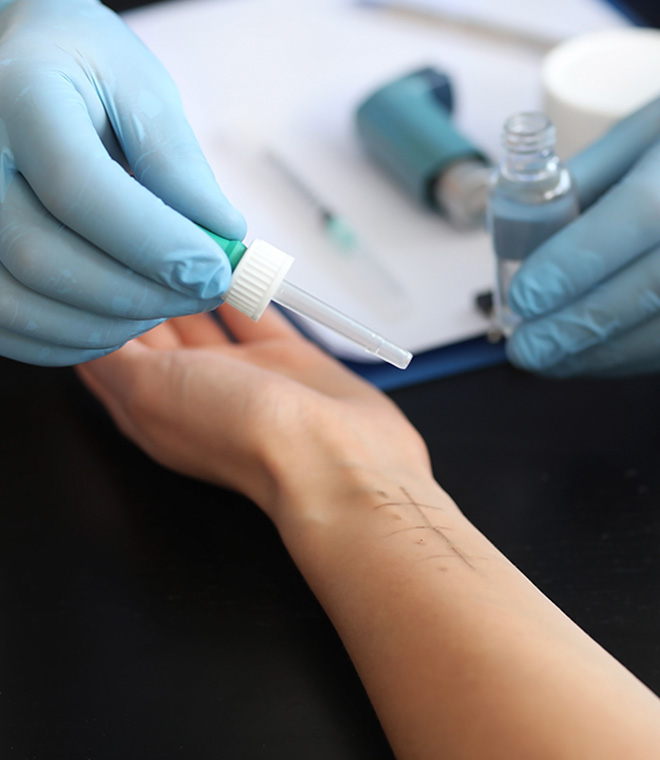Health
At-home allergy testing
By Amy Magill, RDN, MA Mar 25, 2022 • 3 min
Suspected food allergies should always be diagnosed by a qualified healthcare provider, such as a board-certified allergist.
There are several at-home food allergy test kits on the market. However, these tests claim to identify food sensitivities, not food allergies, so self-diagnosis or self-treatment based on these tests is not recommended. These types of home test kits often measure IgG antibodies to foods, which show what the body has been exposed to but not how your body reacted. IgG antibody testing has never been scientifically proven to diagnose food allergies or sensitivities, and this type of testing is not regulated by the Food and Drug Administration.
Reliable tests measure for IgE antibodies in the blood, which are released by the immune system when you are exposed to an allergy-causing substance, such as certain foods. In fact, some of these home tests ask you to send in a hair sample instead of a blood sample, but hair does not contain IgE antibodies, so these tests cannot give accurate information about a food allergy.
Understanding food allergies
A food allergy reaction happens when your immune system reacts to a food or a substance in a specific food as if it were a threat. The reaction can range from mild to severe, or even life-threatening, making it hard to breathe or swallow. Therefore, an accurate diagnosis of a food allergy is very important. Tests used to properly diagnose a food allergy include skin prick or scratch tests, blood tests that measure for IgE antibodies and oral food challenge tests.
A food allergy is not the same as a food sensitivity or intolerance. Unlike a food allergy, a sensitivity or intolerance to a food doesn't involve a reaction from the immune system. With an intolerance or sensitivity, a person is unable to properly digest or break down a certain food. Symptoms are generally limited to the digestive tract and may include nausea, gas, abdominal pain or diarrhea. There are no reliable tests to diagnose food intolerances apart from using breath tests to detect an intolerance to specific sugars, such as lactose or fructose. Your healthcare provider can generally identify a food intolerance or sensitivity by having you keep a food journal and track what you ate when symptoms occurred.
If you have a troublesome reaction after eating a particular food, see your healthcare provider. They can help determine if you have an allergy or intolerance and establish a plan to help control your symptoms.
Clinically reviewed and updated March 2022.
Sources:
2. https://www.aaaai.org/Tools-for-the-Public/Conditions-Library/Allergies/IgG-food-test
3. https://health.clevelandclinic.org/reasons-why-home-allergy-tests-probably-wont-help-you/
4. https://childrenswi.org/NewsHub/stories/at-home-allergy-tests
5. https://www.aaaai.org/Tools-for-the-Public/Conditions-Library/Allergies/food-intolerance



